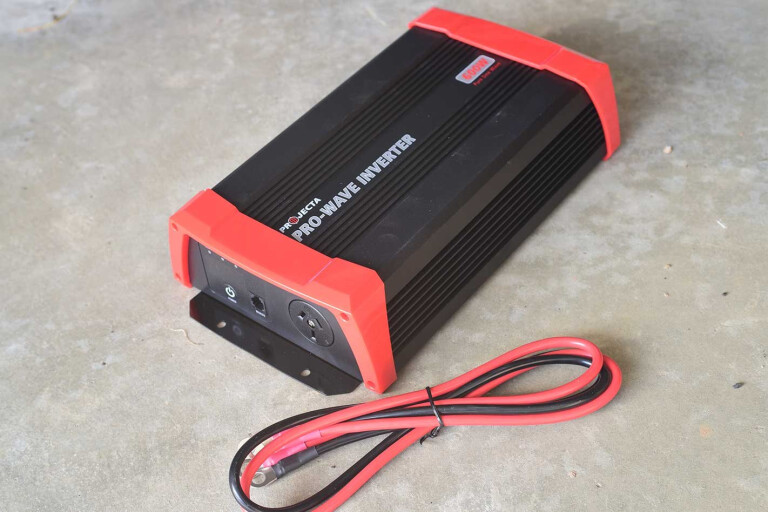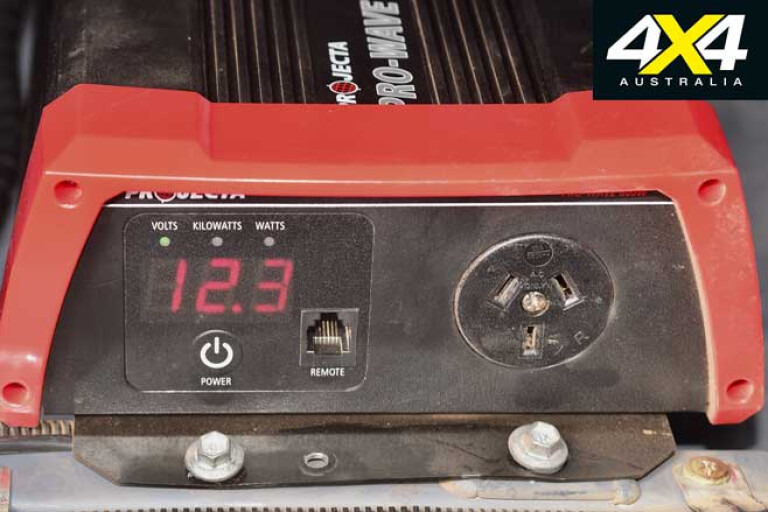
WITH THE plethora of electrical gear we carry on 4WD trips demanding 240-volt power, or at least to be charged from 240-volt power, you need a 12-volt DC to 240-volt AC inverter somewhere in your kit.
You can get a modified sine-wave inverter or a full or pure sine-wave unit; the modified sine-wave units are cheaper and less hungry for 12V power, but I’ve found they don’t run electronically controlled power tools well and they can damage delicate camera and computer batteries. It’s even worse if you charge batteries more than once from a modified sine-wave inverter.
So, my advice is to always go for a pure sine-wave inverter. The next question then is, ‘how big?’ For many years I’ve made do with a 150-watt unit, but it struggled at times and was downright inadequate if I wanted to charge more than one laptop battery at the same time.

Projecta produce a wide range of inverters including modified sine-wave units, Intelli-Wave inverters and Pro-Wave models – the latter two are full sine-wave inverters. In the Pro-Wave line-up there are four units ranging in power from 350- to 1800-watt, while in the Intelli-Wave range there are four 12-volt inverters between 300- and 2000-watt and two 24-volt units producing 2000 and 3000 watts respectively.
This time around we went for a couple of Pro-Wave units, fitting a 350-watt unit to the Hilux and a 600-watt unit to the ol’ Patrol. Check out the selection guide and the equipment you want to power to obtain the best inverter for your needs.
Each unit comes with a short cable to connect to the vehicle’s wiring, but you really need to run some good, thick wires to power these units, especially if you’re running the bigger inverters at full power. For example, the 600-watt unit fitted to my Patrol will, at full output, draw at least 50-amp from the battery. Projecta recommends a 49mm² cable and a 60-amp fuse or circuit breaker for the 600-watt unit.
The 600-watt unit comes with an LED status indicator and a digital display that alternates between showing input voltage and power output in watts/kilowatts. In the event of a fault an alarm will sound and the LED screen will display one of several fault codes.

A press-button power switch, an approved three-pin output socket and a receptacle for a remote control cable/switch (optional) is also included on the front panel. The rear panel has the connections for the 12-volt cable and is where the thermostatically controlled cooling fan is located, so don’t enclose it.
The units are designed to run at 120 per cent of full power for up to eight minutes and will even handle 200 per cent of full power for half a second. These units also produce ultra-clean AC power, which prevents any electrical noise or static affecting any sensitive equipment.
We’ve had these units fitted to the respective vehicles for well over a year and in both cases they have performed faultlessly and proved easy to use and reliable. Due to the current draw, especially on power-hungry appliances, I tend to charge battery equipment while mobile, with the vehicle alternator keeping up with the battery demand.
The RRP is listed here, but you’ll find them cheaper with a bit of searching. We can’t recommend them highly enough.
RATED
Available from: www.projecta.com.au
RRP: $350 (350W); $530 (600W)
We Say: Easy to use, reliable and provides good, clean power

COMMENTS